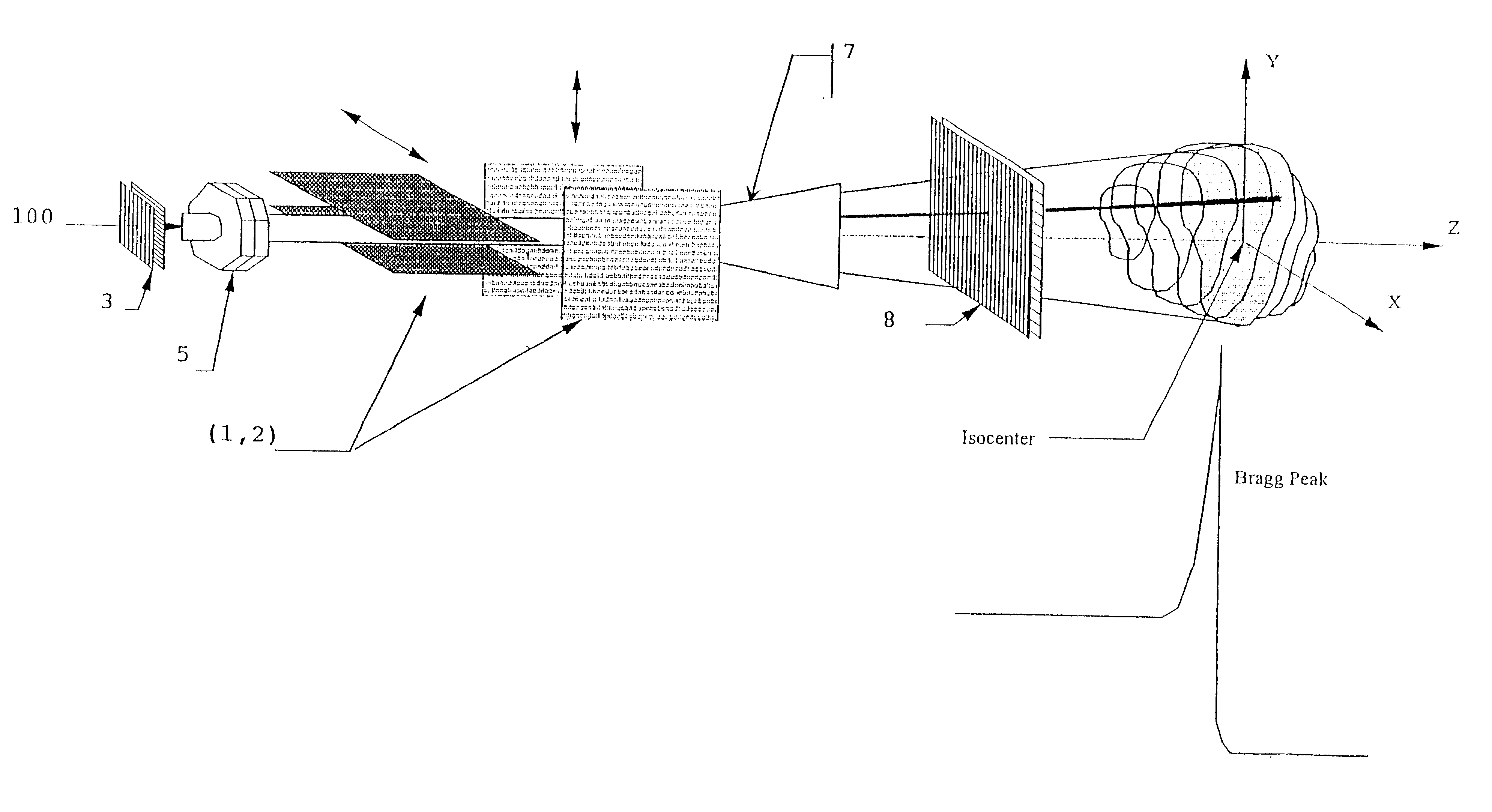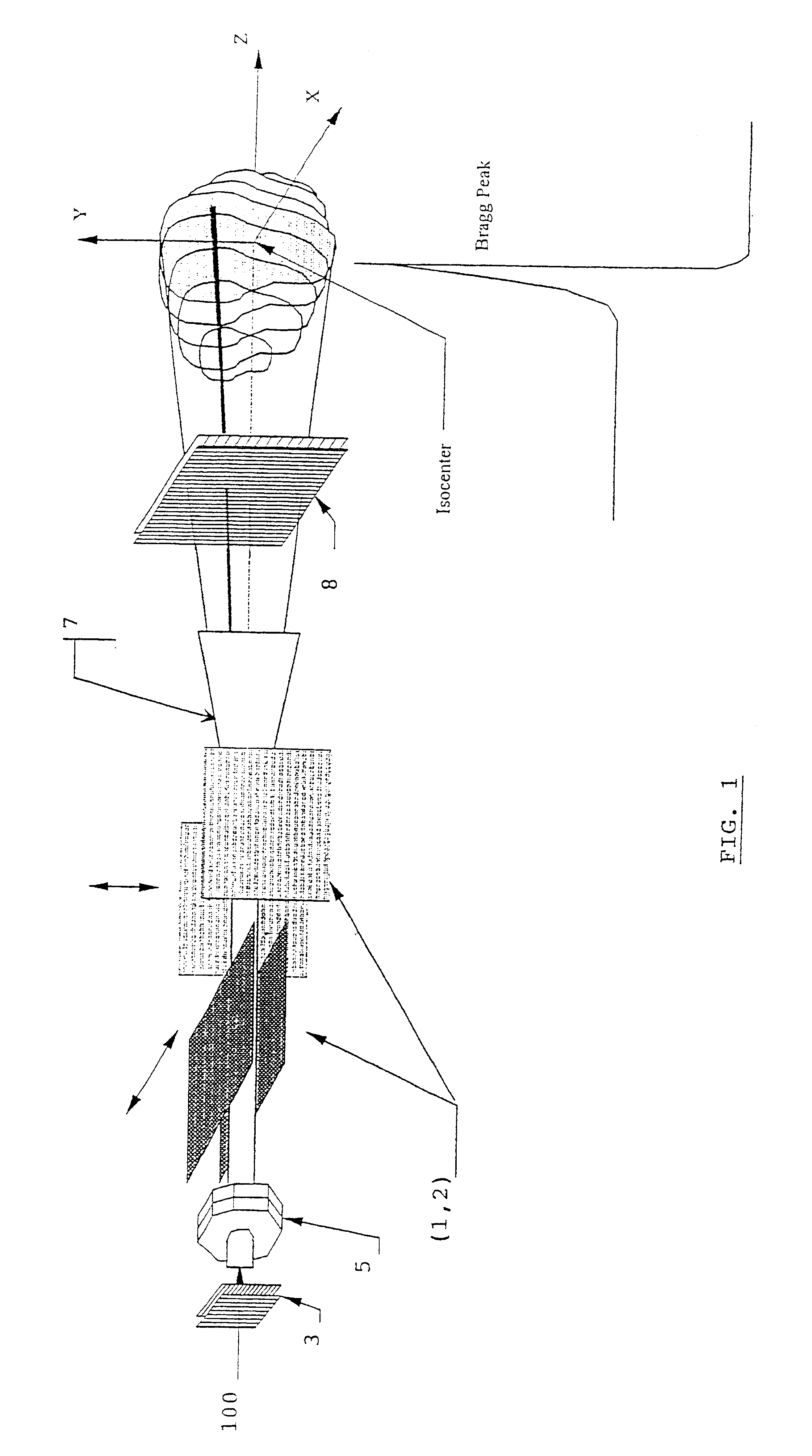Method for treating a target volume with a particle beam and device implementing same
a particle beam and target volume technology, applied in the field of radiotherapy, can solve the problems of increasing the cost of the procedure, cumbersome procedure, and health tissues downstream of the proximal part outside the target volume, and avoiding the effect of large doses
- Summary
- Abstract
- Description
- Claims
- Application Information
AI Technical Summary
Benefits of technology
Problems solved by technology
Method used
Image
Examples
Embodiment Construction
The present invention aims to provide a process and a device for treating a proton beam produced by an accelerator, preferably a fixed-energy accelerator devoted to the irradiation of a target volume consisting, for example, of a tumor to be treated in the case of a cancer, and which have improvements over the prior art described in FIG. 1.
To do this, it is intended to move a spot produced from this proton beam along the three dimensions directly in the patient's body in order to cover the target volume in the three dimensions.
FIG. 1 partially shows the device for carrying out the process according to the present invention. According to one preferred embodiment, a cyclotron (not shown) is used to produce a proton beam 1000 generating a spot 100 to be moved. Means (not shown) are provided for modifying the energy of the proton beam immediately after it is extracted from the accelerator in order to allow the movement of the spot in the longitudinal dimension, that is to say in the dir...
PUM
 Login to View More
Login to View More Abstract
Description
Claims
Application Information
 Login to View More
Login to View More - R&D
- Intellectual Property
- Life Sciences
- Materials
- Tech Scout
- Unparalleled Data Quality
- Higher Quality Content
- 60% Fewer Hallucinations
Browse by: Latest US Patents, China's latest patents, Technical Efficacy Thesaurus, Application Domain, Technology Topic, Popular Technical Reports.
© 2025 PatSnap. All rights reserved.Legal|Privacy policy|Modern Slavery Act Transparency Statement|Sitemap|About US| Contact US: help@patsnap.com


